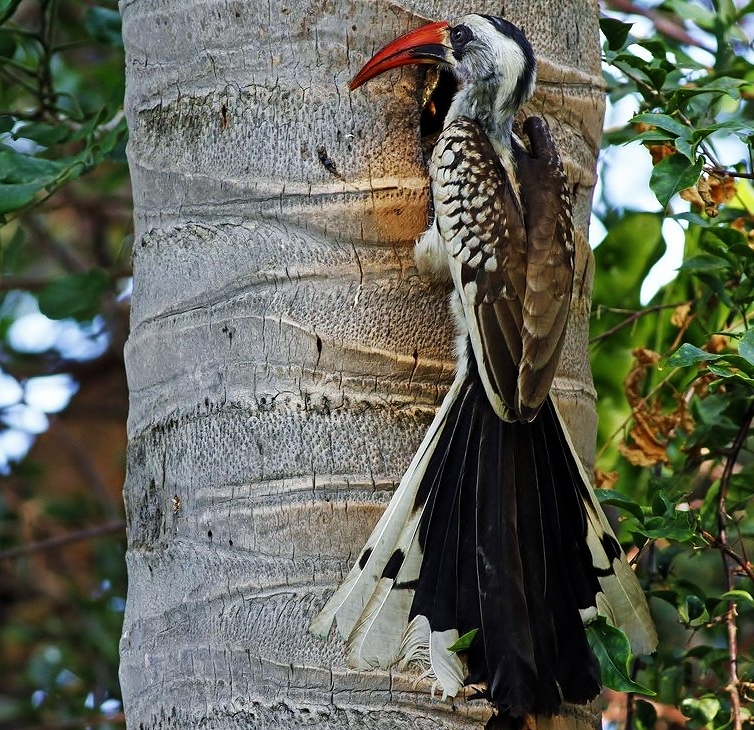Tockus erythrorhynchus
 |
| Photo by Stuart Burns (Wikipedia) |
Common name:
red-billed hornbill (en); calau-de-bico-vermelho (pt); calao à bec rouge (fr); toco piquirrojo (es); rotschnabeltoko (de)
Taxonomy:
Order Coraciiformes
Family Bucerotidae
Range:
This species is found throughout sub-Saharan Africa, from Mauritania, Mali and Sudan all the way south to South Africa.
Size:
The red-billed hornbill is 42-50 cm long and weighs 150 g.
Habitat:
They generally prefer open, wooded savanna with sparse ground cover, and dry thorn-bush. They may also be found in tropical dry forests and high altitude scrubland, being present up to an altitude of 2.000 m.
Diet:
Red-billed hornbills are omnivorous, eating insects, small vertebrates, fruits and seeds. They are known to take beetles, ants, termites, flies, crickets and grasshoppers, centipedes, spiders, solifugids, scorpions, small reptiles, bird eggs and nestlings, rodents, and the seeds and fruits of Boscia and Commiphora.
Breeding:
These birds breed in September-March. They nest in natural cavities in trees, up to 9 m above the ground, and the female seals herself inside that cavity, leaving only a small slit through which the male provides food. There she lays lays 3-6 white eggs which she incubates alone for 23-25 days. She stays in the nest to feed the chicks and only leaves about 3 weeks after they hatched. The chicks fledge 39-50 days after hatching, but remain with their parents for another 6 months.
Conservation:
IUCN status – LC (Least Concern)
This species has an extremely large breeding range and, although the global population size has not been quantified, it is reported to be widespread and locally common. The population is suspected to be stable in the absence of evidence for any declines or substantial threats.







